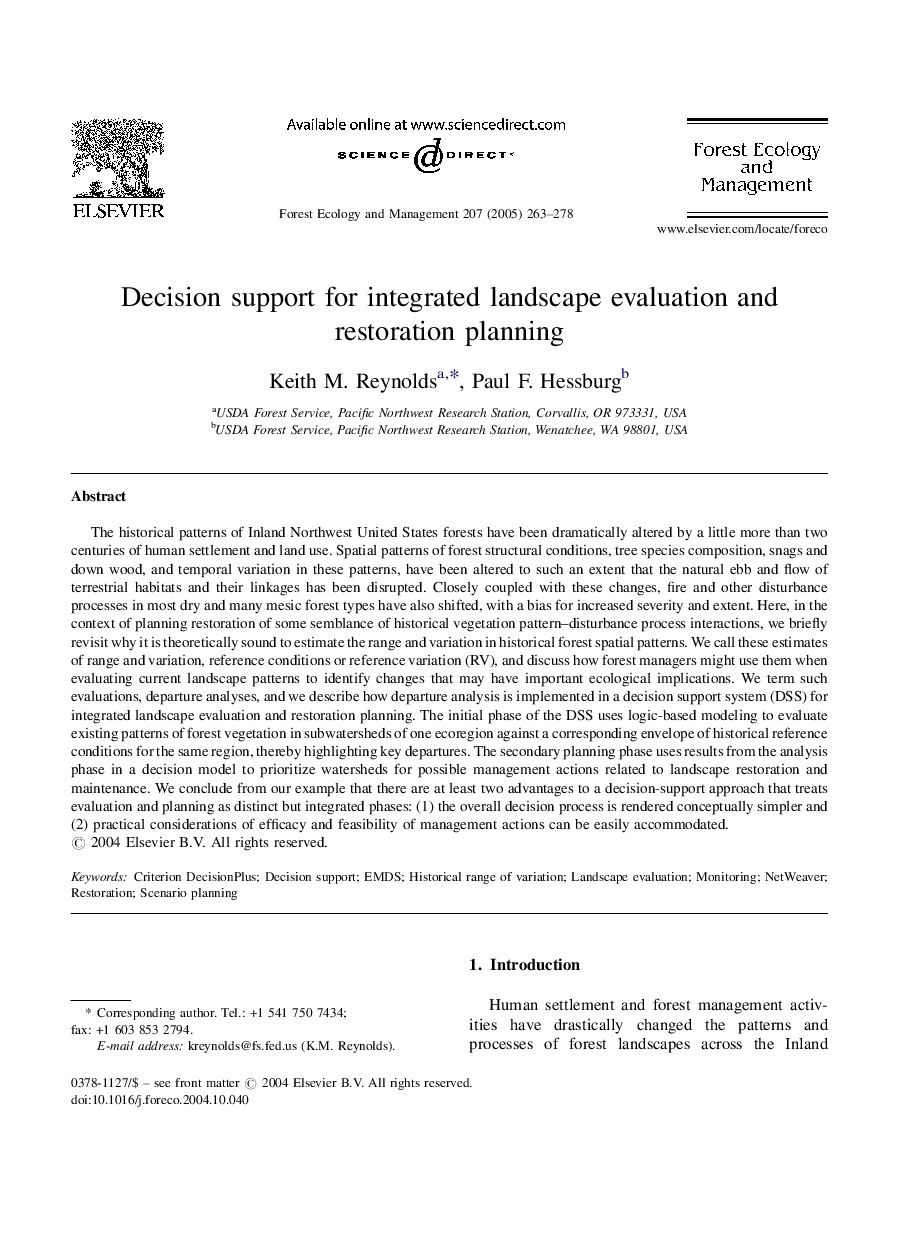| کد مقاله | کد نشریه | سال انتشار | مقاله انگلیسی | نسخه تمام متن |
|---|---|---|---|---|
| 9620454 | 159433 | 2005 | 16 صفحه PDF | دانلود رایگان |
عنوان انگلیسی مقاله ISI
Decision support for integrated landscape evaluation and restoration planning
دانلود مقاله + سفارش ترجمه
دانلود مقاله ISI انگلیسی
رایگان برای ایرانیان
کلمات کلیدی
موضوعات مرتبط
علوم زیستی و بیوفناوری
علوم کشاورزی و بیولوژیک
بوم شناسی، تکامل، رفتار و سامانه شناسی
پیش نمایش صفحه اول مقاله

چکیده انگلیسی
The historical patterns of Inland Northwest United States forests have been dramatically altered by a little more than two centuries of human settlement and land use. Spatial patterns of forest structural conditions, tree species composition, snags and down wood, and temporal variation in these patterns, have been altered to such an extent that the natural ebb and flow of terrestrial habitats and their linkages has been disrupted. Closely coupled with these changes, fire and other disturbance processes in most dry and many mesic forest types have also shifted, with a bias for increased severity and extent. Here, in the context of planning restoration of some semblance of historical vegetation pattern-disturbance process interactions, we briefly revisit why it is theoretically sound to estimate the range and variation in historical forest spatial patterns. We call these estimates of range and variation, reference conditions or reference variation (RV), and discuss how forest managers might use them when evaluating current landscape patterns to identify changes that may have important ecological implications. We term such evaluations, departure analyses, and we describe how departure analysis is implemented in a decision support system (DSS) for integrated landscape evaluation and restoration planning. The initial phase of the DSS uses logic-based modeling to evaluate existing patterns of forest vegetation in subwatersheds of one ecoregion against a corresponding envelope of historical reference conditions for the same region, thereby highlighting key departures. The secondary planning phase uses results from the analysis phase in a decision model to prioritize watersheds for possible management actions related to landscape restoration and maintenance. We conclude from our example that there are at least two advantages to a decision-support approach that treats evaluation and planning as distinct but integrated phases: (1) the overall decision process is rendered conceptually simpler and (2) practical considerations of efficacy and feasibility of management actions can be easily accommodated.
ناشر
Database: Elsevier - ScienceDirect (ساینس دایرکت)
Journal: Forest Ecology and Management - Volume 207, Issues 1â2, 7 March 2005, Pages 263-278
Journal: Forest Ecology and Management - Volume 207, Issues 1â2, 7 March 2005, Pages 263-278
نویسندگان
Keith M. Reynolds, Paul F. Hessburg,